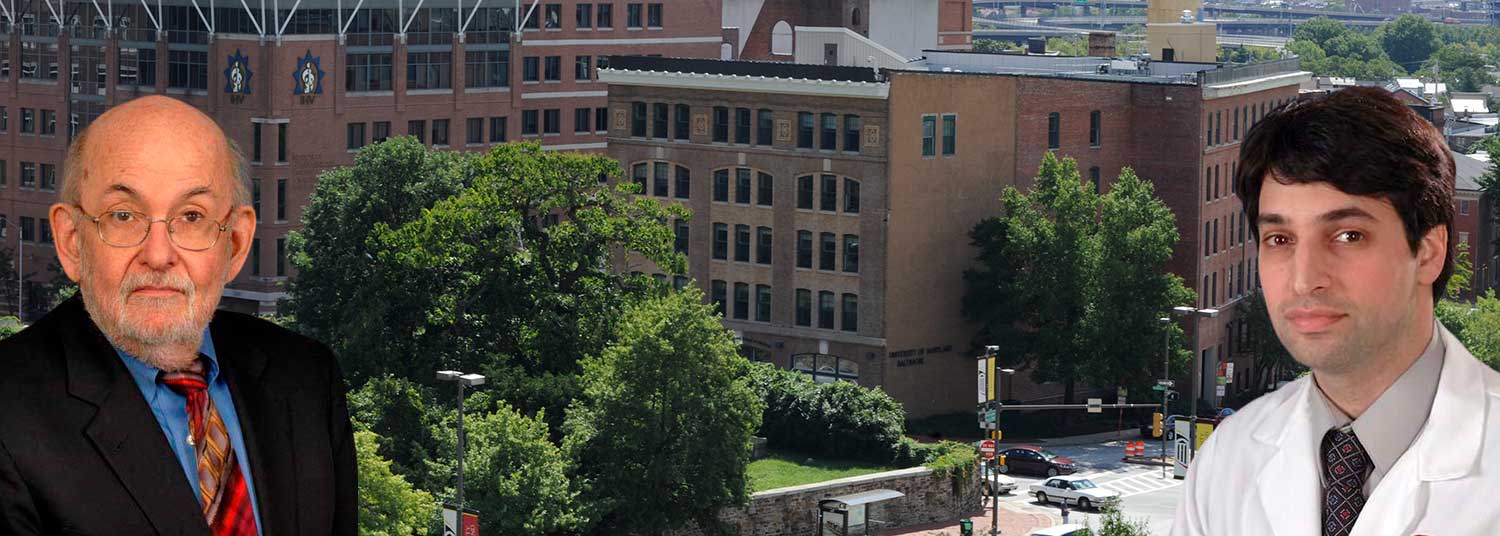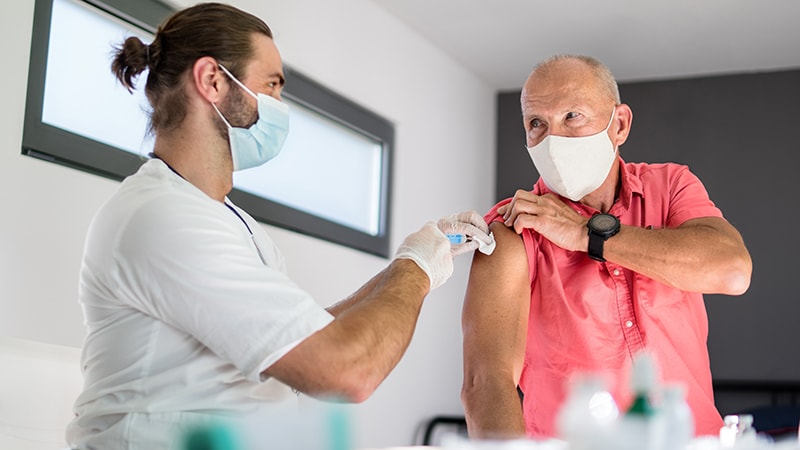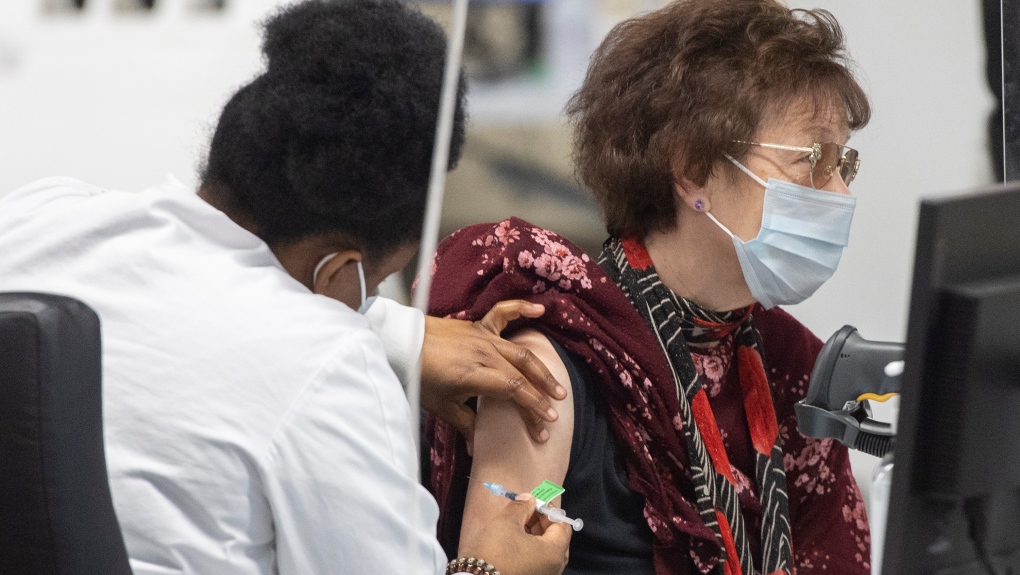Five useful tips for helping the vax-hesitant people get past their objections.

www.medscape.com
Getting Reluctant Patients to 'Yes' on COVID Vaccination
David Brzostowicki
March 20, 2024
No matter how much we'd like to leave it in the dust, COVID-19 remains prevalent and potent. Tens of thousands of people
still contract COVID per week in the United States. Hundreds die. And those who don't may still develop long COVID.
Pleas from public health officials for people to get a COVID vaccine or booster shot have been ignored by many people. About
80% of eligible Americans haven't taken any kind of COVID booster. Meantime, the virus continues to mutate, eroding the efficacy of the vaccine's past versions.
How to get more people to get the jab? Vaccine hesitancy, said infectious disease specialist William Schaffner, MD, is likely rooted in a lack of trust in authority, whether it's public health officials or politicians.
Schaffner, a professor of infectious diseases at the Vanderbilt University School of Medicine, Nashville, Tennessee, and former medical director of the National Foundation for Infectious Diseases, recommended five strategies physicians can try when discussing the importance of staying up to date on COVID vaccines with patients.
#1: Be Patient With Your Patient
First and foremost, if doctors are feeling reluctance from their patients, they need to know "what they shouldn't do," Schaffner said.
When a patient initially doesn't want the vaccine, doctors shouldn't express surprise. "Do not scold or berate or belittle. Do not give the impression the patient is somehow wrong or has failed a test of some sort," Schaffner said.
Step back and
affirm that they understand what the patient is saying so they feel reassured, even if they don't agree or it's based on falsehoods about the vaccine.
He said patients need to feel "the doctor heard them, it's
okay to tell the doctor this." When you affirm what the patient says, it puts them at ease and provides a smoother road to eventually getting them to say "yes."
But if there's still a roadblock, don't bulldoze them. "You don't want to punish the patient…let them know you'll continue to hear them," Schaffner said.
#2: Always Acknowledge a Concern
Fear of side effects is great among some patients, even if the risks are low, Schaffner said. Patients may be hesitant because they're afraid they'll become one of the "two or three in a million" who suffer extremely rare side effects from the vaccine, Schaffner said.
In that case, doctors should acknowledge their concern is valid, he said. Never be dismissive. Ask the patients how they feel about the vaccine, listen to their responses, and let them know "I hear you. This is a new mRNA vaccine…you have concern about that," Schaffner said.
Doctors can segue into how there's little reason to wait for some elusive perfectly risk-free vaccine when they can help themselves right now.
"The adverse events that occur with vaccines occur within 2 months [and are typically mild]. I don't know of a single vaccine that has genuinely long-term implications," Schaffner said. "We should remember that old French philosopher Voltaire. He admonished us: Waiting for perfection is the great enemy of the current good."
#3: Make a Strong Recommendation
Here's something that may seem obvious: Don't treat the vaccine as an afterthought. "Survey after survey tells us this…it has everything to do with the strength of the recommendation," Schaffner said.
Doctors typically make strong treatment recommendations such conditions as diabetes or high blood pressure, but "when it comes to vaccines, they're often rather nonchalant," he said.
If a patient is eligible for a vaccine, doctors should tell the patient they
need to get it — not that you think they should get it. "Doctors have to make a firm recommendation: 'You're eligible for a vaccine…and you need to get it…you'll receive it on your way out.' It then becomes a distinct and strong recommendation," he said.
#4: Appeal to Patients' Hearts, Not Their Minds
In the opening of Charles Dickens's novel "Hard Times," the stern school superintendent, Mr Gradgrind, scolds his students by beating their brow with the notion that, "Facts alone are wanted in life. Plant nothing else and root out everything else."
The idea that facts alone can sway a vaccine-resistant patient is wrong. "It often doesn't happen that way," Schaffner said. "I don't think facts do that. Psychologists tell us, yes, information is important, but it's rarely sufficient to change behavior."
Data and studies are foundational to medicine, but the key is to change how a patient
feels about the data they're presented with, not how they
think about it. "Don't attack their brain so much but their heart," Schaffner said.
Schaffner has stressed with his patients that the COVID vaccine has become "the social norm," suggesting virtually everyone he knows has received it and had no problem.
Once questions have been answered about whether the vaccine works and its various side effects, doctors could remind the patient, "You know, everyone in my office is getting the vaccine, and we're trying to provide this protection to every patient," he said.
You're then delving deeper into their emotions and crossing a barrier that facts alone can't breach.
#5: Make it Personal
Lead by example and personalize the fight against the virus. This allows doctors to act as if they're building an alliance with their patients by framing the vaccine not as something that only affects them but can also confer benefits to a broader social circle.
Even after using these methods, patients may remain resistant, apprehensive, or even indifferent. In cases like these, Schaffner said it's a good idea to let it go for the time being.
Let the patient know they "have access to you and can keep speaking with you about it" in the future, he said. "It takes more time, and you have to be cognizant of the nature of the conversation."
Everybody is unique, but with trust, patience, and awareness of the patient's feelings, doctors have a better shot at finding common ground with their patients and convincing them the vaccine is in their best interest, he said.






 Shyam Kottilil, MBBS, PhD
Shyam Kottilil, MBBS, PhD















